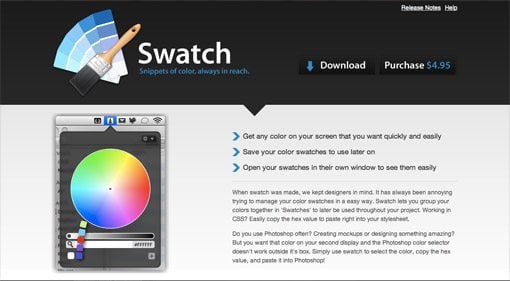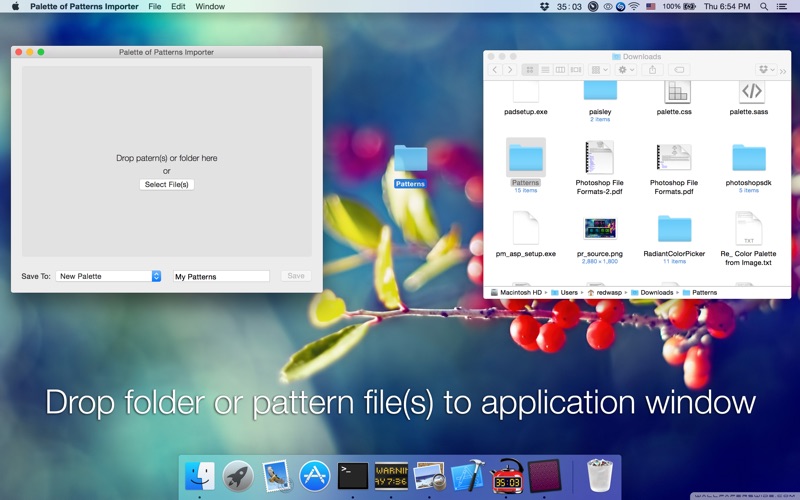
Color Palette Importer For Mac
When the copy is complete, disconnect your USB drive from the campus computer and connect it to your computer. Installing to your computer. The following is for the campus version (used in most classrooms). The version downloaded from the SolidWorks website may contain a newer service pack. Install solidworks on flash drive.
The Swatches panel (Window Color Swatches) lets you create and name colors, gradients, or tints,and quickly apply them to your document. Swatches are similar toparagraph and character styles; any change you make to a swatch affectsall objects to which the swatch is applied. Swatches make it easierto modify color schemes without having to locate and adjust eachindividual object.When the fill or stroke of selected text or an object containsa color or gradient applied from the Swatches panel, the appliedswatch is highlighted in the Swatches panel. Swatches you createare associated only with the current document.
Small tools to import and export colors from the Mac OS X ColorPicker palettes (.CLR). Adobe Swatch Exchange (.ASE) import and export. Hex color list to.
Each document canhave a different set of swatches stored in its Swatches panel. Paper is a built‑in swatch that simulates the paper color on which you’re printing. Objects behind a paper-colored object won’t print where the paper-colored object overlaps them. Instead, the color of the paper on which you print shows through. You can edit the Paper color to match your paper stock by double-clicking it in the Swatches panel. Use the Paper color for previewing only—it will not be printed on a composite printer or in color separations.
You can’t remove this swatch. Do not apply the Paper swatch to remove color from an object. Use the None swatch instead. By default, the name of a process color swatch is derived from the values of the color’s components. For example, if you create a red process color using 10% cyan, 75% magenta, 100% yellow, and 0% black, its swatch is named C=10 M=75 Y=100 K=0 by default. This makes it easier to identify the composition of process colors.By default, the name of a process color swatch automatically updates when you change its CMYK values; you can switch this option off or on for individual swatches as needed.
As with any swatch you define, you can change the name of a process color swatch at any time. Youcan import colors and gradients from other documents, adding eitherall or some of the swatches to the Swatches panel. You can loadswatches from InDesign files (.indd), InDesign templates (.indt),Illustrator files (.ai or.eps), and Adobe Swatch Exchange files(.ase) created by InDesign, Illustrator, or Photoshop. Adobe SwatchExchange files contain swatches saved in the Adobe Swatch Exchangeformat.InDesign also includes color libraries from othercolor systems, such as the PANTONE Process Color System®. PANTONE® Colorsare the worldwide standards for spot color reproduction. In 2000,a major revision was made to the PANTONE MATCHING SYSTEM® Color guides. 147 newsolid colors and seven additional metallic colors have been addedto the System to now include a total of 1,114 colors.

PANTONE Colorguides and chip books are now printed on coated, uncoated, and matte paperstocks to ensure accurate visualization of the printed result andbetter on-press control.You can print a solid PANTONE Colorin CMYK. To compare a solid PANTONE Color to its closest processcolor match, use the PANTONE solid to process guide.
The CMYK screentint percentages are printed under each color. The guide is now printedon a brighter coated stock and includes comparisons of the 147 newsolid colors to CMYK.PANTONE process guides let you choosefrom over 3,000 process combinations now printed on coated and uncoatedstocks. Displayed in chromatic order in fan-guide format, it's easyto select colors and specify CMYK screen values.For moreinformation, contact Pantone, Inc., in Carlstadt, New Jersey, U.S.A.